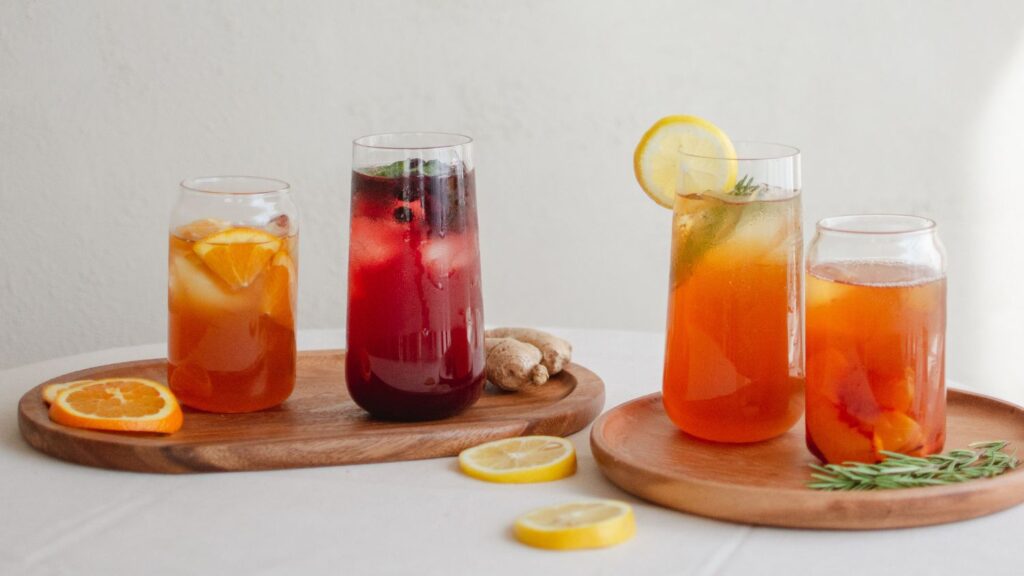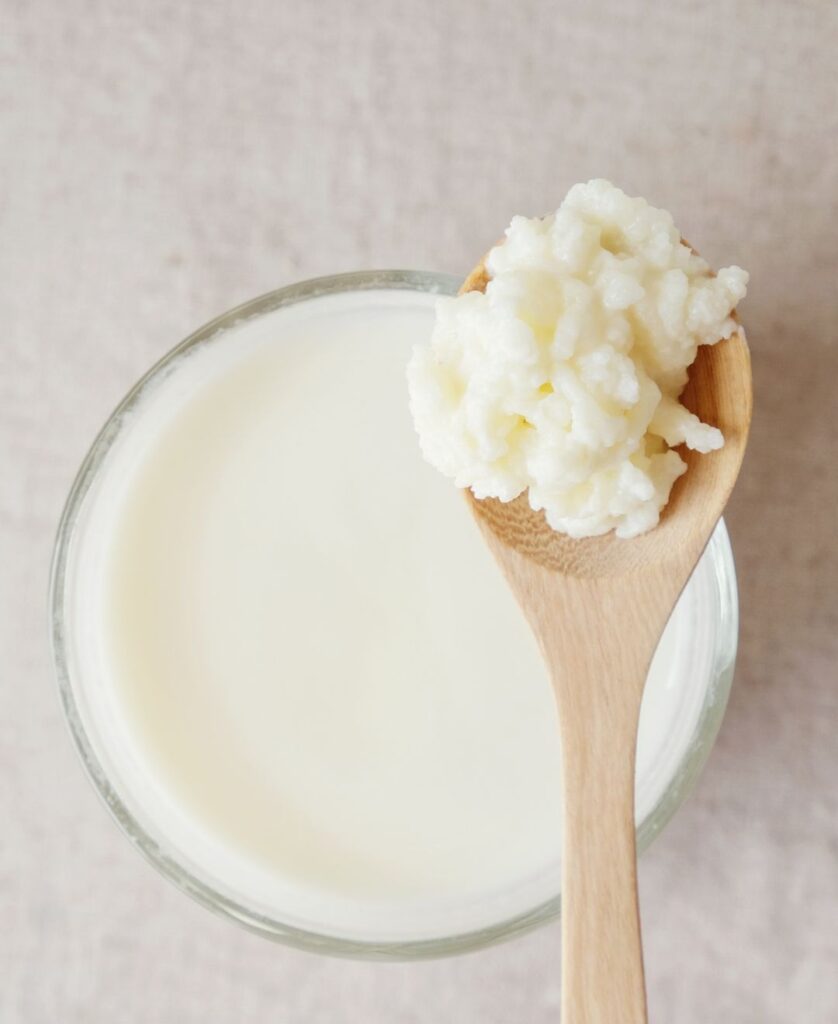The Rise of Fermented Beverages and Sweet Brown Flavor
Functional foods, and beverages in particular, have experienced a near meteoric rise in recent years. In fact, the functional beverage market is projected to nearly double from USD 175.5 billion in 2022 to a projected USD 339.6 billion by 2030.
From hydrating sports drinks to immune-boosting wellness shots, the functional beverage space continues to expand in scope and variety of offerings. Still, one sub-category that continues to take center stage is fermented beverages.
Whether it’s kombucha, kefir, or countless others, fermented beverages often offer natural health benefits and also make the perfect canvas for incorporating other functional ingredients or innovative and indulgent flavor profiles.

Fermented Beverage Fundamentals
Crafting fermented beverages for their delicious tastes or their positive health effects isn’t something that just started with the functional food movement.
Cultures from around the world have been employing various fermentation methods for centuries to produce these delicious beverages.
Most well-known among these are fermented dairy products, such as kefir, lassi, and drinkable yogurts, as well as fermented plant-based beverages like kombucha, fermented teas, and countless other traditional fruit- and grain-derived beverages.

While not all fermented beverages are renowned for their health benefits, those that have been making waves, such as kombucha and kefir/yogurt, definitely are.
The list of Kombucha benefits is impressive, including the potential to reduce the risk of heart disease, help manage type 2 diabetes, support liver health, and possibly aid in protecting against cancer.
Fermented milk beverages are extremely high in protein, making them a popular choice for meal replacements and weight management. In some countries, fermented dairy products are even being marketed as great options for maintaining healthy, radiant skin.
Then, of course, there’s what they and many other fermented products are known for: gut health benefits.
Going With Your Gut
Saying that gut health has become a top priority of consumers is a bit of an understatement.
According to research from McKinsey & Co., over 80% of consumers in China, the UK, and the US believe that gut health is important, with more than 50% planning to make it a high priority in the coming years.
However, this isn’t only about digestion. While researchers acknowledge that we are only just starting to scratch the surface of the various roles the gut microbiome plays in overall health, the understanding of its importance only continues to grow.
The delicate balance of up to 1,000 species of bacteria in the human gut can impact one’s weight, brain and mental health, and digestion. Some estimates even believe that the gut itself can account for upwards of 70% of the body’s immune system.

Fermented beverages often help to confer these benefits from their abundant and various strains of probiotics.
The evidence of the power of probiotics is so strong that, while not fermented in their own right, developers have begun to sell popular probiotic sodas as healthier alternatives to the much-maligned standard drink options.
Others have sought ways to incorporate synergistic ingredients, such as prebiotic fibers and postbiotics, into their “gut-healthy” products.
Yet, this is only where the potential functional opportunities for fermented beverages begin.
Functional & Flavorful Beyond Fermentation
“Fermented drinks are primarily touted for their amazing benefits for gut health, but that’s only where the functional opportunities for these beverages begins,” says Emily Sheehan, Applications Manager—EMEA/APAC at Edlong.
She explains that using the natural strengths and growing popularity of fermented beverages as a jumping-off point, there is incredible potential to incorporate additional functional ingredients, such as botanical extracts, adaptogens, nootropics, or antioxidants, as further ways to help consumers tailor their purchases to their specific needs.
Even more so, Sheehan believes there is a tremendous opening for developers to introduce rich and indulgent sweet brown flavors into these beverages.
“Currently, the fermented beverage space is dominated by fruit-forward flavor profiles. This makes a lot of sense considering the tart, bright acidity of fruit pairs well with the often sour and acidic nature of fermented drinks. In the case of fermented dairy drinks like kefir or yogurt, the fruit can help cut through the richness, while the creamy and milky notes work to balance and mellow out the fruit. However, the opportunity to make these healthy functional drinks a truly indulgent treat is something that shouldn’t be missed.”
She acknowledges that while not all sweet brown flavors will work in every product, looking at the Venn diagram of overlapping characteristics is a great way to start.

Beverages like a probiotic-rich ginger beer would pair amazingly well with the smooth and sweet taste of vanilla or maybe even pumpkin spice.
Fruity kombuchas could be a perfect candidate for a seasonal spiced apple crumble, a honey infusion, or even a tropical twist with notes of toasted coconut.
A campfire s’mores yogurt or an indulgent caramel cheesecake kefir are also just a few of the unlimited possibilities.
Sheehan also stresses not to forget about the low or no-alcohol movement among younger generations.
Benefits Without the Buzz
A survey from Attest Technologies found that 1 in 5 (21.5%) of Gen Z adults choose to abstain from alcohol. Similarly, in April 2024, Millennials accounted for 61% of non-alcoholic beer consumers in the US, compared to 45% in 2023.
While not mentioned in the same breath as kombucha, tea, or yogurt, many alcoholic beverages like wine and beer are also the result of fermentation.
Crafting alcohol-free versions of these beverages can not only help companies capitalize on growing trends, but including innovative and indulgent profiles can help them put the “fun” in functional.
“The craft beer and cocktail scenes has gotten so creative and inventive over the past decade or so, and finding ways to offer that same exciting experience in non-alcoholic and functional options could be a game changer for the space,” says Sheehan.
She adds, “Imagine being able to go to the pub and get a rich, creamy, chocolate stout without the headache the next morning. Or even a creamy coconut cocktail that actually improves your energy and focus. These are the kind of indulgent experiences that we can bring to fermented and functional beverages if we just have the imagination and the right flavor partners to do so.”
About the Author: Emily Sheehan, Applications Manager, EMEA
Hi! I’m Emily Sheehan. I’m the Applications Manager, EMEA at Edlong, and my job is rooted in creating exciting new possibilities for our people and processes. It’s inspiring to reflect on how much Edlong has achieved and even more amazing to be involved in such thoughtful innovation. We enjoy pushing boundaries in food and flavour, and we welcome everyone in the food industry to join us. If you’re in need of expertise or inspiration, I’d love to collaborate and help you design flavour solutions that resonate with consumers!
Topics: Better For YouBeveragesFunctional FoodsSweet dairy flavors
Resource Type: Article
